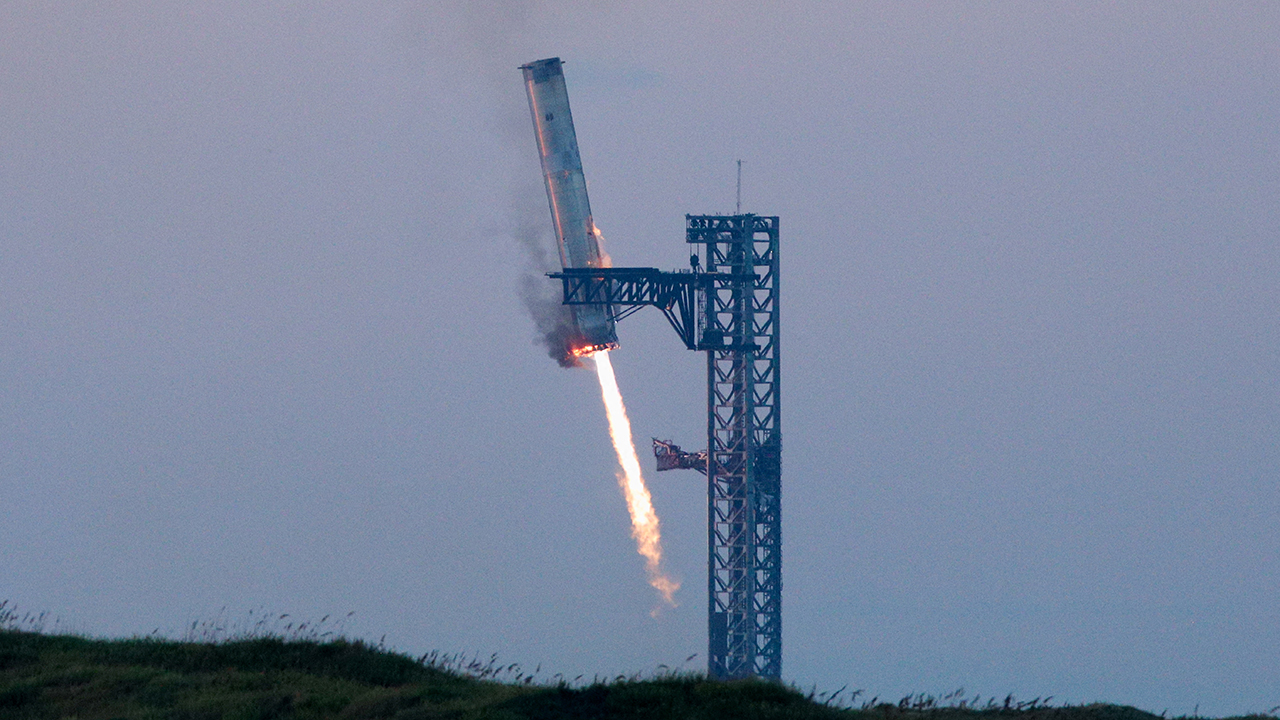Ladies and gents, we are living in the future. The SpaceX team, led by none other than Elon Musk, just pulled off something that reads like the wildest sci-fi fantasy come to life. If you missed it, here’s a quick rundown: On October 13, 2024, SpaceX launched its 400-foot-tall Starship for the fifth time from its Texas site, sent it soaring into the heavens, and then, in a move that would make even Hollywood special effects teams sweat, caught the gigantic booster mid-air using a massive pair of mechanical chopsticks attached to a launch tower.
Yes, you heard that right. The same Super Heavy booster, towering at an impressive 165 feet, took off, hovered back down, and was caught by the arms of the launch tower like it was a precision-timed, metal-juggling act. And this wasn’t just any rocket—it’s the biggest and most powerful rocket ever built. Think skyscraper meets jet engine.
Now, why does this matter beyond being the coolest thing we’ve seen in space tech? Let’s dig into it.
Why "Chopsticks" Are SpaceX's Secret Sauce
When you think of space travel, you think of rockets blasting off, disappearing into the sky, and, historically, pieces of them plummeting back to Earth like overpriced space junk. That’s just how it’s always been—until now.
Elon Musk and his team at SpaceX are rewriting the playbook. They’re flipping the script on rocket landings, creating reusable rockets that don’t just fall into the ocean like broken toys but land, refuel, and are ready to take off again. And what’s the secret ingredient in this grand plan? You guessed it: the chopsticks.
This isn’t just a clever bit of engineering—it’s a massive leap toward sustainability and cost efficiency in space travel. Imagine the money saved when you don’t have to build new rockets every time you want to launch. Imagine the time saved when you can flip a rocket, refuel it, and send it right back up. The implications are mind-blowing. Space travel might just become as regular as your morning commute—well, at least for the space nerds among us.
The Future: Building a Highway to the Stars
But what’s the big picture here? Why does catching a booster matter beyond its “wow” factor?
SpaceX isn’t just aiming to get us off this planet for fun (although, to be fair, that is part of the charm). They’re building something much bigger: the infrastructure that will let humanity settle the Moon, Mars, and maybe even beyond. Think of Starship as the 21st-century Mayflower—but instead of wooden ships, we’re launching colossal steel rockets capable of carrying entire settlements to new worlds.
Musk’s vision, as ambitious as it is, revolves around making space not just accessible but inhabitable. And that dream hinges on reusable tech like Starship. Instead of crashing and burning, these rockets will land gracefully, refuel, and be back in action in no time—giving us a real shot at living on multiple planets. And that’s where the real magic of this booster catch comes in.
Starship’s Role in NASA’s Moon Landing—And Beyond
NASA is already on board with SpaceX’s dream. They’re betting big on Starship, planning to use it as their first crewed lander for the Artemis program. And guess what? That mission is slated for September 2026, which means we’re only two years away from humans stepping foot on the Moon again, courtesy of this sleek, reusable rocket. It’s like the Apollo missions but with a futuristic, 21st-century twist.
Let’s take a moment to appreciate what this means. For decades, the Moon landings were the high-water mark of space achievement. But if Musk’s plans go as scheduled, a new generation of astronauts could soon be strolling across the lunar surface, and Starship will be the Uber that gets them there.
Why the Future is Reusable: The Economic and Environmental Impact
Now, let’s talk money—because let’s face it, all of this sounds dreamy, but someone’s gotta pay the bill, right?
Here’s the EXTRA: The reusable rocket tech that SpaceX is championing isn’t just a clever engineering feat; it’s a game-changer for the entire space economy. Traditionally, launching a rocket costs around $62 million per launch. That’s some serious cash. But with reusability, those costs plummet faster than the booster itself. Instead of forking over millions each time, we’re looking at launch costs dropping by factors that could make space accessible for industries far beyond just NASA or government agencies.
Imagine a future where commercial businesses, universities, or even countries with modest space budgets can launch satellites, conduct experiments, or even send crewed missions—all because reusable rockets made space cheaper and more accessible. It’s like when air travel went from a luxury for the wealthy to something everyone could enjoy. SpaceX is doing that—but for the final frontier.
The Emotional Tug of Space: How Starship Makes Us Dream Again
Okay, let’s get real for a second. When was the last time you felt truly inspired by space? Maybe it was watching grainy footage of Apollo landings or seeing grainy “pictures” of Mars. But let’s face it—recently, space exploration has felt a little stagnant. A lot of talk, not a lot of action.
SpaceX is changing that. They’re not just launching rockets—they’re relaunching the human spirit. They’re showing us that the sky isn’t the limit; it’s just the beginning. And this booster catch is symbolic of something much bigger: the idea that we can still push boundaries, achieve the impossible, and reignite that sense of wonder that’s been lost in the shuffle of everyday life.
The chopsticks, Starship, the whole shebang—it’s not just about engineering. It’s about hope. It’s about proving that when humans set their minds to something, no dream is too big. It’s about believing in a future where we’re not stuck on this rock, where we’re exploring new frontiers, pushing the envelope, and, dare I say it, becoming a multi-planetary species.
Will We Become a Multi-Planetary Species?
It’s a big question. Musk certainly thinks so, and if history has taught us anything, it’s not to bet against him. But let’s play devil’s advocate for a second. Can humanity handle such an existential leap? The logistics, the ethics, the very idea of spreading our species to other worlds—these are questions we’ve never truly faced. But if Starship has anything to say about it, we’ll have to start confronting these challenges sooner than we think.
SpaceX’s booster catch wasn’t just a cool stunt—it was a beacon, a signal that the future we’ve been dreaming of is a lot closer than we thought.
A Call to Action
So, what does this all mean for you? Well, if you’re like me—a die-hard space enthusiast—you’re probably already packing your bags for the Moon. But if you’re just starting to think about what’s next for humanity, the time to get excited is now.
What do you think? Are you ready to become part of a multi-planetary civilization? What are your hopes and fears for the future of space exploration? Let’s continue this conversation in the comments below.
And hey, if you’re as excited as I am, why not become part of the iNthacity community? We’re building a "Shining City on the Web," and there’s room for visionaries like you. Apply to become permanent residents, then citizens of iNthacity here. Like, share, and join the debate—because the future is being built right now, and you don’t want to miss it.





















Post Comment
You must be logged in to post a comment.